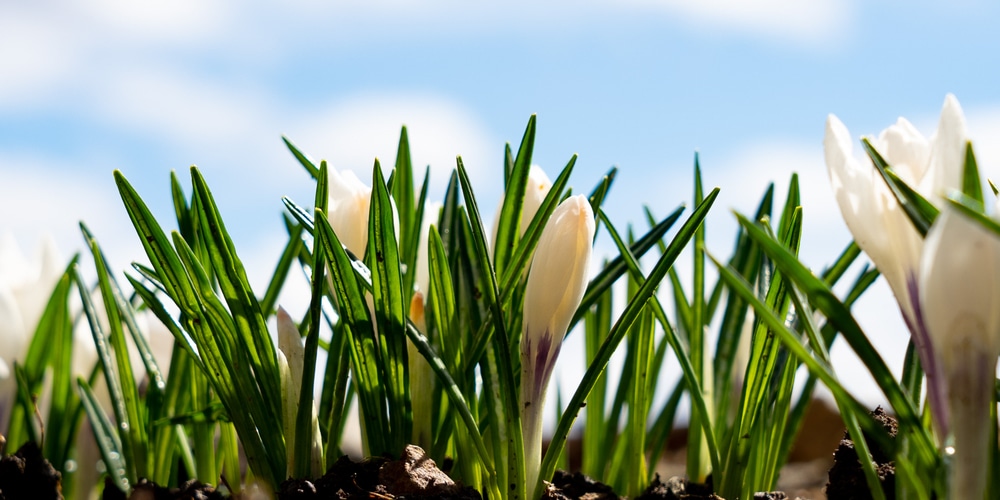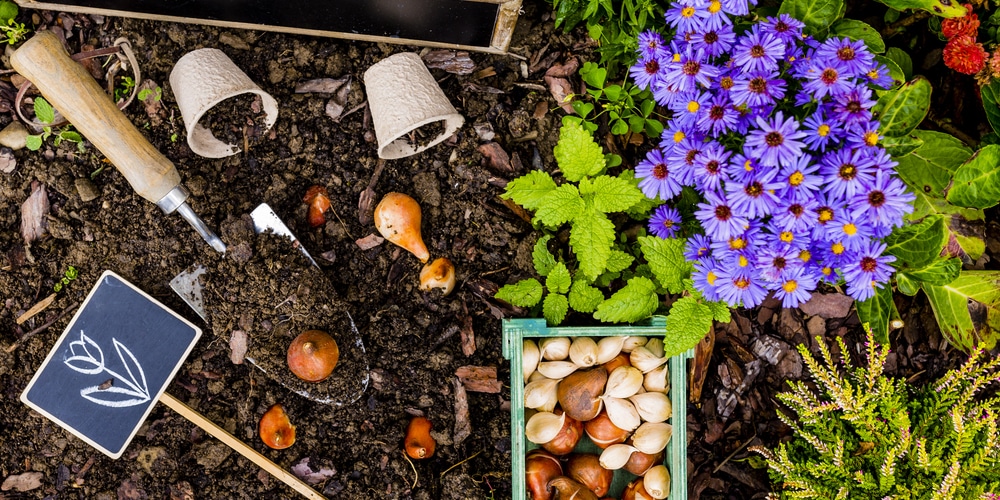Being an experienced gardener, you should know that the secret to having a beautiful garden depends on patience, hard work, and time. Patience is essential because you can’t do everything in a given time. However, patience pays off.
Apart from that, when fall arrives, you get some time to manage the gaps by filling them. It is a great time to start and fill those bare spots with blooming bulbs. These are living buds, and they contain all the important nutrients required to produce the year’s first blossoms.
So, when you plant bulbs during fall, you allow them to pass through winter so that they can focus on root growth. And it leads to abundant blossoms during the spring.
When you should plant bulbs in Colorado
If you are thinking about when to plant bulbs in Colorado, the most preferred time is fall. For most gardeners, fall bulb planting is the easiest way to jump-start the spring season when it comes to gardening. In short, the best time to plant bulbs is between mid-September and late October.
That way, bulbs can establish their roots before the soil slowly turns hard due to freezing. Also, you should start purchasing bulbs in early September. As a result, you can have the best selection and lots of variety. When determining when for all the major bulbs to plant, there are certain aspects that you should consider.
As said, the soil has to be soft and warm enough for the bulbs to establish roots before the earth begins to freeze. That way, the plant can start its life before the ground freezes. The newly formed roots will ensure that the bulb doesn’t get pushed away from the ground by cold.
When you plant too early while the soil is still warm, it prompts the bulb to grow from the top instead of essential roots. Professionals advocate that bulbs need to be planted around six weeks before the ground turns hard. Also, the ground temperature should not be more than 55 degrees Fahrenheit.
So, when is the right time to do that? The answer is between September and October. However, do you know the secret what makes the flowers bloom from early spring to mid-summer? Well, the secret is a technique called layering. And, it isn’t difficult, and anyone can do it effectively regardless of having a small garden or a container.
Why do gardeners prefer spring-blooming bulbs?
Most gardeners love the concept of spring-blooming bulbs, and there are enough good reasons for that as well. To begin with, the planting work, if you call it that way, is conducted in the fall. Now, that’s the best time when the daytime temperature is almost cool, and you can work comfortably.
Nothing can be compared to the burst of early spring color that has the power to beat the winter doldrums. Besides, gardeners consider bulbs as drought evaders’ because they tend to remain dormant amidst drought conditions.
In general, bulbs bloom effortlessly before the dry, hot summer sets, resulting in the soil drying out. Last but not least, most bulbs tend to self-propagate through seeds, bulbils, and offsets.
What bulbs can you plant?
If you are thinking about what bulbs to plant, you can choose the hardy bulbs that have the potential to survive throughout the lower winter temperatures in Colorado. Also, you can leave them on the ground with lower maintenance.
While you can plant spring-blooming bulbs during fall, you can also choose between fall and summer-blooming bulbs. However, if you have a garden that blooms throughout the year, you can plant early-blooming crocus and scilla snowdrops, followed by hyacinths, tulips, and daffodils.
Lastly, you can add gladiolas, cannas, dahlias, and alliums that will take you through the season. These bulbs are considered a staple in Colorado gardens because they grow with ease.
Other considerations when planting bulbs
Most gardeners in Colorado start planting spring bulbs in August or September. To prepare the bed, lose the soil around 8 inches deep. Besides, the optimal pH should be around 6 to 7. When working on Colorado’s clay soils, adding organic matter such as peat or compost becomes a necessity. The pointed side of the bulb should be up, and the root part should be down.
Related Article: Can Bulbs Survive in USDA Hardiness Zone 9?



